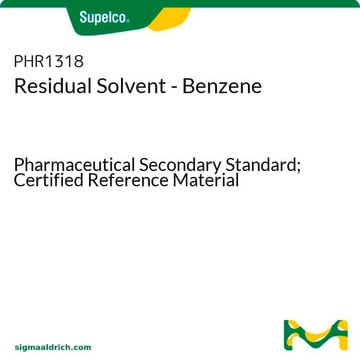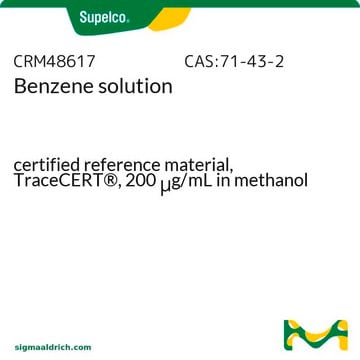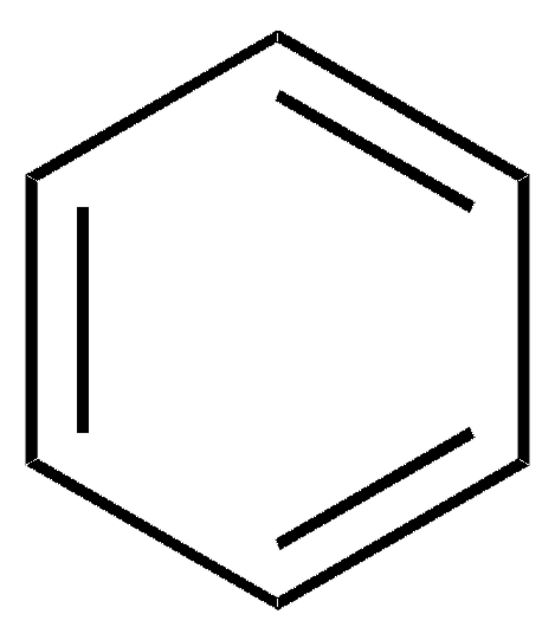PHR1310
Benzene
Pharmaceutical Secondary Standard; Certified Reference Material
About This Item
Recommended Products
grade
certified reference material
pharmaceutical secondary standard
Quality Level
Agency
traceable to NIST 3000
traceable to USP 1601146
vapor density
2.77 (vs air)
vapor pressure
166 mmHg ( 37.7 °C)
74.6 mmHg ( 20 °C)
CofA
current certificate can be downloaded
autoignition temp.
1043 °F
expl. lim.
8 %
technique(s)
HPLC: suitable
gas chromatography (GC): suitable
refractive index
n20/D 1.501 (lit.)
bp
80 °C (lit.)
mp
5.5 °C (lit.)
density
0.874 g/mL at 25 °C (lit.)
application(s)
pharmaceutical (small molecule)
format
neat
storage temp.
2-30°C
SMILES string
c1ccccc1
InChI
1S/C6H6/c1-2-4-6-5-3-1/h1-6H
InChI key
UHOVQNZJYSORNB-UHFFFAOYSA-N
Looking for similar products? Visit Product Comparison Guide
General description
Application
Analysis Note
Other Notes
Footnote
Recommended products
Signal Word
Danger
Hazard Statements
Precautionary Statements
Hazard Classifications
Aquatic Chronic 3 - Asp. Tox. 1 - Carc. 1A - Eye Irrit. 2 - Flam. Liq. 2 - Muta. 1B - Skin Irrit. 2 - STOT RE 1
Target Organs
Blood
Storage Class Code
3 - Flammable liquids
WGK
WGK 3
Flash Point(F)
12.2 °F
Flash Point(C)
-11 °C
Choose from one of the most recent versions:
Certificates of Analysis (COA)
Sorry, we don't have COAs for this product available online at this time.
If you need assistance, please contact Customer Support.
Already Own This Product?
Find documentation for the products that you have recently purchased in the Document Library.
Customers Also Viewed
Protocols
ASTM D6526: GC Analysis of Impurities in Toluene on SLB®-IL100, 60 m Column
HPLC Analysis of Benzene and Deuterated Benzene on Ascentis® Express C18
GC Analysis of Xylene Isomers on SLB®-IL60 - The cresol (methylphenol) isomers are also precursors to many chemicals. This chromatogram of a mix of aromatic and methylphenol compounds was generated using an SLB-IL60 ionic liquid column. Its interaction mechanisms allow the separation of all three xylene isomers, and all three cresol isomers.
Technical article page on -US EPA Method 8015 (modified): GC Analysis of Gasoline Range Organics (GRO) on Equity®-1 after Purge & Trap using "M" Trap
Our team of scientists has experience in all areas of research including Life Science, Material Science, Chemical Synthesis, Chromatography, Analytical and many others.
Contact Technical Service









